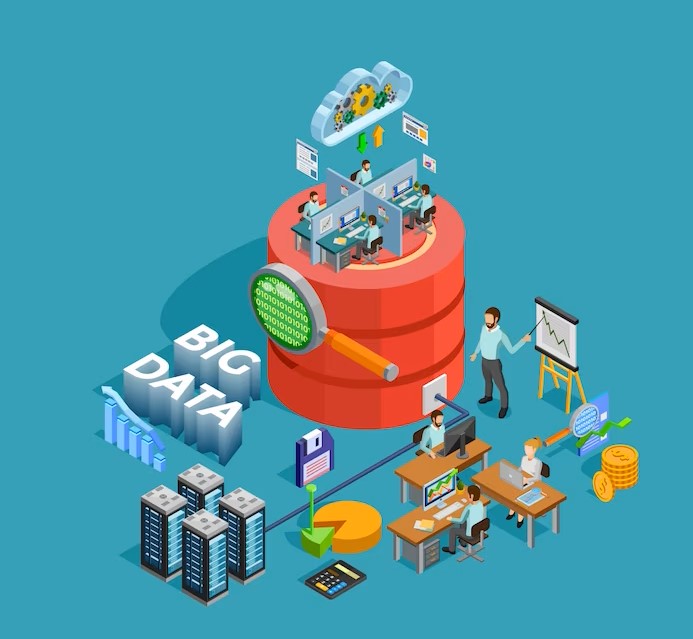Discover how to seamlessly integrate Hadoop into your data processing workflows with Hadoop APIs and open ports. Learn about different Hadoop APIs, their functionalities, and the open ports required for successful integration.
Are you looking to integrate Hadoop into your data processing workflow? Do you want to make sure your Hadoop cluster is running smoothly and securely? Look no further! In this comprehensive guide, we will delve into Hadoop APIs and open ports, providing you with the knowledge and insights needed to master them for seamless integration.
Hadoop is an open-source framework that allows for distributed processing of large datasets across clusters of computers. It has become the go-to tool for big data processing due to its scalability, fault tolerance, and flexibility. However, to fully utilize the power of Hadoop, it’s crucial to understand its APIs and open ports, which serve as the communication channels for data processing.
Understanding Hadoop APIs
Hadoop provides various APIs that allow developers to interact with the Hadoop ecosystem and perform operations such as data ingestion, data processing, and data retrieval. The most commonly used Hadoop APIs are:
- Hadoop MapReduce API: This API allows developers to write MapReduce jobs, which are the foundation of Hadoop data processing. MapReduce jobs consist of two phases – map and reduce – and are used to process large datasets in parallel across multiple nodes in a Hadoop cluster.
- Hadoop HDFS API: This API enables developers to interact with Hadoop Distributed File System (HDFS), which is the primary storage system used in Hadoop clusters. Developers can use the HDFS API to perform operations such as reading and writing data to HDFS, managing files and directories, and setting permissions.
- Hadoop YARN API: This API allows developers to manage resources and schedule tasks in a Hadoop cluster. YARN (Yet Another Resource Negotiator) is the resource manager in Hadoop, responsible for managing cluster resources and allocating them to different applications.
Mastering Open Ports in Hadoop
Open ports in Hadoop are the communication channels used by different components of the Hadoop ecosystem to exchange data and instructions. It’s essential to understand these open ports to ensure smooth communication and data transfer in a Hadoop cluster. Some of the crucial open ports in Hadoop are:
- NameNode Port: The NameNode is the master node in HDFS, responsible for managing metadata and coordinating data access. The NameNode listens on a specific port (default is 8020) for incoming requests from clients and other Hadoop components.
- DataNode Port: DataNodes are worker nodes in HDFS that store actual data. They communicate with the NameNode and clients to perform data read and write operations. DataNodes listen on a specific port (default is 50010) for communication with the NameNode and another port (default is 50020) for communication with clients.
- ResourceManager Port: The ResourceManager is the master node in YARN, responsible for managing resources and scheduling tasks. It listens on a specific port (default is 8032) for incoming requests from clients and other YARN components.
- NodeManager Port: NodeManagers are worker nodes in YARN that manage resources and execute tasks. They communicate with the ResourceManager and applications to manage resources and report node status. NodeManagers listen on a specific port (default is 8042) for communication with the ResourceManager and other ports for communication with applications.
Best Practices for Seamless Integration
To ensure seamless integration of Hadoop APIs and open ports, here are some best practices to follow
- Secure Open Ports: Open ports are potential entry points for security threats. It’s crucial to secure open ports by configuring firewalls, setting up authentication and authorization mechanisms, and regularly monitoring for any suspicious activity.
- Optimize API Usage: Efficient usage of Hadoop APIs can significantly impact the performance of data processing. Make sure to optimize API usage by writing efficient MapReduce jobs, minimizing data movement across the network, and leveraging advanced features such as combiners and partitioners.
- Follow Hadoop Configuration Best Practices: Hadoop provides a wide range of configuration options that can be tuned to optimize performance and reliability. It’s essential to follow Hadoop configuration best practices, such as setting appropriate memory allocation for different components, tuning the number of mapper and reducer tasks, and configuring replication factor for HDFS data.
- Monitor and Tune Open Ports: Monitoring the usage and performance of open ports is critical for identifying and resolving any issues. Utilize Hadoop monitoring tools such as Hadoop Metrics and Ganglia to keep track of open port activities and performance metrics. Additionally, tune the open ports for optimal performance by adjusting buffer sizes, timeout settings, and other relevant configurations.
- Keep APIs and Hadoop Versions in Sync: Hadoop is an evolving ecosystem with frequent updates and improvements. It’s crucial to keep your APIs and Hadoop versions in sync to ensure compatibility and leverage the latest features and bug fixes. Regularly update your API codebase and Hadoop installation to stay up-to-date with the latest advancements in the Hadoop ecosystem.
- Test and Validate Integration: Before deploying Hadoop into a production environment, thoroughly test and validate the integration of APIs and open ports. Conduct comprehensive testing to identify any potential issues or bottlenecks, and validate the performance, reliability, and security of the integrated system. This will help you identify and resolve any issues proactively, ensuring a seamless integration of Hadoop into your data processing workflow.
A Comprehensive Guide to Power BI APIs and Open Ports for Seamless Integration
Conclusion
In conclusion, mastering Hadoop APIs and open ports is essential for seamless integration of Hadoop into your data processing workflow. Understanding the different APIs, securing open ports, following best practices, and validating the integration are key steps to ensure smooth and efficient data processing in your Hadoop cluster. By following these guidelines, you can optimize the performance, reliability, and security of your Hadoop ecosystem and unlock the full potential of big data processing.

